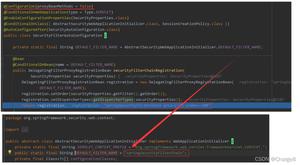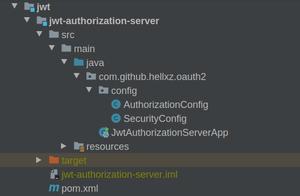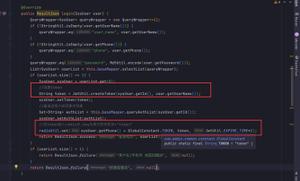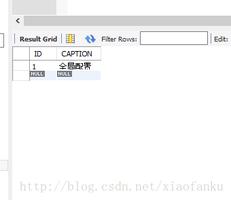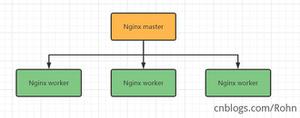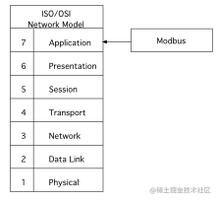详解如何使用Jersey客户端请求Spring Boot(RESTFul)服务
本文介绍了使用Jersey客户端请求Spring Boot" title="Spring Boot">Spring Boot(RESTFul)服务,分享给大家,具体如下:
Jersey客户端获取Client对象实例封装:
@Service("jerseyPoolingClient")
public class JerseyPoolingClientFactoryBean implements FactoryBean<Client>, InitializingBean, DisposableBean{
/**
* Client接口是REST客户端的基本接口,用于和REST服务器通信。Client被定义为一个重量级的对象,其内部管理着
* 客户端通信底层的各种对象,比如连接器,解析器等。因此,不推荐在应用中产生大量的的Client实例,这一点在开发中
* 需要特别小心,另外该接口要求其实例要有关闭连接的保障,否则会造成内存泄露
*/
private Client client;
/**
* 一个Client最大的连接数,默认为2000
*/
private int maxTotal = 2000;
/**
* 每路由的默认最大连接数
*/
private int defaultMaxPerRoute = 1000;
private ClientConfig clientConfig;
public JerseyPoolingClientFactoryBean() {
}
/**
* 带配置的构造函数
* @param clientConfig
*/
public JerseyPoolingClientFactoryBean(ClientConfig clientConfig) {
this.clientConfig = clientConfig;
}
public JerseyPoolingClientFactoryBean(int maxTotal, int defaultMaxPerRoute) {
this.maxTotal = maxTotal;
this.defaultMaxPerRoute = defaultMaxPerRoute;
}
/**
* attention:
* Details:容器销毁时,释放Client资源
* @author chhliu
*/
@Override
public void destroy() throws Exception {
this.client.close();
}
/**
*
* attention:
* Details:以连接池的形式,来初始化Client对象
* @author chhliu
*/
@Override
public void afterPropertiesSet() throws Exception {
// 如果没有使用带ClientConfig的构造函数,则该类的实例为null,则使用默认的配置初始化
if(this.clientConfig == null){
final ClientConfig clientConfig = new ClientConfig();
// 连接池管理实例,该类是线程安全的,支持多并发操作
PoolingHttpClientConnectionManager pcm = new PoolingHttpClientConnectionManager();
pcm.setMaxTotal(this.maxTotal);
pcm.setDefaultMaxPerRoute(this.defaultMaxPerRoute);
clientConfig.property(ApacheClientProperties.CONNECTION_MANAGER, pcm);
/*
* 在使用Jersey来请求Spring Boot服务时,Spring Boot默认使用Jackson来解析JSON
* 而Jersey默认使用MOXy解析JSON,当Jersey Client想Spring Boot服务请求资源时,
* 这个差异会导致服务端和客户端对POJO的转换不同,造成反序列化的错误
* 因此,此处需要在Client的Config实例中注册Jackson特性
*/
clientConfig.register(JacksonFeature.class);
// 使用配置Apache连接器,默认连接器为HttpUrlConnector
clientConfig.connectorProvider(new ApacheConnectorProvider());
client = ClientBuilder.newClient(clientConfig);
}else{
// 使用构造函数中的ClientConfig来初始化Client对象
client = ClientBuilder.newClient(this.clientConfig);
}
}
/**
* attention:
* Details:返回Client对象,如果该对象为null,则创建一个默认的Client
* @author chhliu
*/
@Override
public Client getObject() throws Exception {
if(null == this.client){
return ClientBuilder.newClient();
}
return this.client;
}
/**
* attention:
* Details:获取Client对象的类型
* @author chhliu
*/
@Override
public Class<?> getObjectType() {
return (this.client == null ? Client.class : this.client.getClass());
}
/**
* attention:
* Details:Client对象是否为单例,默认为单例
* @author chhliu
*/
@Override
public boolean isSingleton() {
return true;
}
}
请求Spring Boot服务的封装:
@Component("jerseyClient")
public class JerseyClient {
@Resource(name="jerseyPoolingClient")
private Client client;
/**
* attention:
* Details:通过id来查询对象
* @author chhliu
*/
public ResultMsg<GitHubEntity> getResponseById(final String id) throws JsonProcessingException, IOException{
WebTarget webTarget = client.target("http://localhost:8080").path("/github/get/user/"+id);
Invocation.Builder invocationBuilder = webTarget.request(MediaType.APPLICATION_JSON);
GenericType<ResultMsg<GitHubEntity>> genericType = new GenericType<ResultMsg<GitHubEntity>>(){};
Response response = invocationBuilder.get();
if(response.getStatus() == 200){
/*
* 当调用readEntity方法时,程序会自动的释放连接
* 即使没有调用readEntity方法,直接返回泛型类型的对象,底层仍然会释放连接
*/
return response.readEntity(genericType);
}else{
ResultMsg<GitHubEntity> res = new ResultMsg<GitHubEntity>();
res.setErrorCode(String.valueOf(response.getStatus()));
res.setErrorMsg(response.getStatusInfo().toString());
res.setOK(false);
return res;
}
}
/**
* attention:
* Details:分页查询
* @author chhliu
*/
public ResultMsg<Pager<GitHubEntity>> getGithubWithPager(final Integer pageOffset, final Integer pageSize, final String orderColumn){
WebTarget webTarget = client.target("http://localhost:8080").path("/github/get/users/page")
.queryParam("pageOffset", pageOffset)
.queryParam("pageSize", pageSize)
.queryParam("orderColumn", orderColumn);
// 注意,如果此处的媒体类型为MediaType.APPLICATION_JSON,那么对应的服务中的参数前需加上@RequestBody
Invocation.Builder invocationBuilder = webTarget.request(MediaType.APPLICATION_JSON);
GenericType<ResultMsg<Pager<GitHubEntity>>> genericType = new GenericType<ResultMsg<Pager<GitHubEntity>>>(){};
Response response = invocationBuilder.get();
if(response.getStatus() == 200){
return response.readEntity(genericType);
}else{
ResultMsg<Pager<GitHubEntity>> res = new ResultMsg<Pager<GitHubEntity>>();
res.setErrorCode(String.valueOf(response.getStatus()));
res.setErrorMsg(response.getStatusInfo().toString());
res.setOK(false);
return res;
}
}
/**
* attention:
* Details:根据用户名来查询
* @author chhliu
*/
public ResultMsg<List<GitHubEntity>> getResponseByUsername(final String username) throws JsonProcessingException, IOException{
WebTarget webTarget = client.target("http://localhost:8080").path("/github/get/users/"+username);
Invocation.Builder invocationBuilder = webTarget.request(MediaType.APPLICATION_JSON);
GenericType<ResultMsg<List<GitHubEntity>>> genericType = new GenericType<ResultMsg<List<GitHubEntity>>>(){};
Response response = invocationBuilder.get();
if(response.getStatus() == 200){
return response.readEntity(genericType);
}else{
ResultMsg<List<GitHubEntity>> res = new ResultMsg<List<GitHubEntity>>();
res.setErrorCode(String.valueOf(response.getStatus()));
res.setErrorMsg(response.getStatusInfo().toString());
res.setOK(false);
return res;
}
}
/**
* attention:
* Details:根据id来删除一个记录
* @author chhliu
*/
public ResultMsg<GitHubEntity> deleteById(final String id) throws JsonProcessingException, IOException{
WebTarget target = client.target("http://localhost:8080").path("/github/delete/"+id);
GenericType<ResultMsg<GitHubEntity>> genericType = new GenericType<ResultMsg<GitHubEntity>>(){};
Response response = target.request().delete();
if(response.getStatus() == 200){
return response.readEntity(genericType);
}else{
ResultMsg<GitHubEntity> res = new ResultMsg<GitHubEntity>();
res.setErrorCode(String.valueOf(response.getStatus()));
res.setErrorMsg(response.getStatusInfo().toString());
res.setOK(false);
return res;
}
}
/**
* attention:
* Details:更新一条记录
* @author chhliu
*/
public ResultMsg<GitHubEntity> update(final GitHubEntity entity) throws JsonProcessingException, IOException{
WebTarget target = client.target("http://localhost:8080").path("/github/put");
GenericType<ResultMsg<GitHubEntity>> genericType = new GenericType<ResultMsg<GitHubEntity>>(){};
Response response = target.request().buildPut(Entity.entity(entity, MediaType.APPLICATION_JSON)).invoke();
if(response.getStatus() == 200){
return response.readEntity(genericType);
}else{
ResultMsg<GitHubEntity> res = new ResultMsg<GitHubEntity>();
res.setErrorCode(String.valueOf(response.getStatus()));
res.setErrorMsg(response.getStatusInfo().toString());
res.setOK(false);
return res;
}
}
/**
* attention:
* Details:插入一条记录
* @author chhliu
*/
public ResultMsg<GitHubEntity> save(final GitHubEntity entity) throws JsonProcessingException, IOException{
WebTarget target = client.target("http://localhost:8080").path("/github/post");
GenericType<ResultMsg<GitHubEntity>> genericType = new GenericType<ResultMsg<GitHubEntity>>(){};
Response response = target.request().buildPost(Entity.entity(entity, MediaType.APPLICATION_JSON)).invoke();
if(response.getStatus() == 200){
return response.readEntity(genericType);
}else{
ResultMsg<GitHubEntity> res = new ResultMsg<GitHubEntity>();
res.setErrorCode(String.valueOf(response.getStatus()));
res.setErrorMsg(response.getStatusInfo().toString());
res.setOK(false);
return res;
}
}
}
Jersey客户端接口详解
1 Client接口
创建一个Client实例是通过ClientBuilder构造的,通常使用一个ClientConfig实例作为参数,如果我们使用Client client = ClientBuilder.newClient()的方式来创建Client实例的时候,每次都会创建一个Client实例,但该实例是一个重量级的对象,所以,建议使用HTTP连接池的方式来管理连接,而不是每次请求都去创建一个Client对象,具体的连接池管理方式见上面的代码示例。
2 WebTarget接口
WebTarget接口是为REST客户端实现资源定位的接口,通过WebTarget接口,我们可以定义请求资源的具体地址,查询参数和媒体类型信息等。我们可以通过方法链的方式完成对一个WebTarget实例的配置,但是需要注意的是,虽然WebTarget的使用方式和StringBuffer的方法链方式非常类似,但实质是不一样的,WebTarget的方法链必须设置方法的返回值,作为后续流程的句柄,这个是什么意思了,看下面的几个示例:
示例1:StringBuffer的方法链示例
StringBuffer sb = new StringBuffer("lch");
sb.append("hello");
sb.append("world");
sb.append("hello").append("world"); // 这种方式和上面的两行代码实现的效果是一样的。
示例2:WebTarget的方法链示例
// 使用一行代码的方法链来实例化WebTarget
WebTarget webTarget = client.target("http://localhost:8080");
webTarget.path("/github/get/users/page")
.queryParam("pageOffset", pageOffset)
.queryParam("pageSize", pageSize)
.queryParam("orderColumn", orderColumn);
// 下面是分开使用方法链来实例化WebTarget
webTarget.path("/github/get/users/page");
webTarget.queryParam("pageOffset", pageOffset);
webTarget.queryParam("pageSize", pageSize);
// 上面两种实例化的方式最后产生的结果大相径庭,上面的实例化方式是OK的,没有问题,下面的实例化方式却有问题,下面的实例化方式中,每一行都会生成一个
// 新的WebTarget对象,原来的WebTarget并没有起任何作用,毕竟每一行的实例都不一样,如果我们想要分多行实例化了,就必须为每个方法的返回提供一个句柄,方式如下:
WebTarget target = client.target("http://localhost:8080");
WebTarget pathTarget = target.path("/github/get/users/page");
WebTarget paramTarget = pathTarget.queryParam("pageOffset", pageOffset);
// 最后使用的时候,用最后一个WebTarget实例对象即可
3 Invocation接口
Invocation接口是在完成资源定位配置后,向REST服务端发起请求的接口,请求包括同步和异步两种方式,由Invocation接口内部的Builder接口定义,Builder接口继承了同步接口SyncInvoker,异步调用的使用示例如下:
Future<ResultMsg<List<GitHubEntity>>> response = invocationBuilder.async().get(genericType);
if(response.isDone()){
return response.get();
}
Invocation.Builder接口实例分别执行了GET和POST请求来提交查询和创建,默认情况下,HTTP方法调用的返回类型是Response类型,同时也支持泛型类型的返回值,在上面的示例中,我们使用了大量的泛型,这里就不做过多的解释了。
以上是 详解如何使用Jersey客户端请求Spring Boot(RESTFul)服务 的全部内容, 来源链接: utcz.com/z/352126.html


